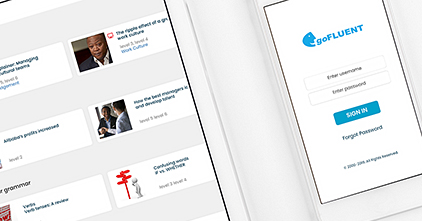In the realm of corporate training, rapid changes are taking place that will be long-lasting for years to come. Learn more about the impact of COVID-19 on L&D in this article.

It’s no surprise that companies both big and small are experiencing unprecedented changes due to today’s global health crisis. And it’s ultimately changing not just the way people work, but also how they learn on a massive scale.
Caught in the middle of a “Big Reset” as coined by Josh Bersin, business leaders now hold a new way of thinking about management, leadership, and professional development. But since the future isn’t fully clear yet, many companies are still navigating through this crisis, seeing how crucial it is to plan strategically and be agile and practical to get back on track. Part of this preparation includes looking beyond the next few months and what it will mean for their workforce.
A recent Brandon Hall Group survey revealed that the biggest challenge for organizations, after adjusting business operations, is employee engagement and productivity. Thus, they want to know how to keep people functioning at a high level when things return to whatever normal may eventually be. And rightly so. Learning has always played a huge role in engagement and that is even more true now in the current environment.
So, here’s how COVID-19 has impacted corporate learning and what we can learn from them:

Digital is the new normal
The current situation has compelled organizations to take a new look at everything. Be it from connecting with colleagues to holding client meetings, digital has become the new normal for many across the globe. And the same rings true for employee training, so organizations are considering migrating some existing in-person training programs to an all-digital format. 51%
In a world where in-person learning events have disappeared from the calendar, organizations must put their best foot forward with virtual and other digital learning experiences. For years, we’ve seen that a more engaging learning environment supported by technology comes with many benefits for both learning leaders and learners alike — easier accessibility, learning flexibility, customized and relevant content, and consolidated monitoring and reporting.
Not to mention, many companies have fast-tracked their digital transformation to increase collaboration among teams as they take courses together and collaborate in virtual formats such as videoconferencing and instant messaging. In this way, the interactive and social aspects of learning can come to life within and in support of technology.
Since there’s still uncertainty about how long this crisis is going to last, transitioning to a digital learning solution will definitely be a smart move for any company. Navigating through it may be quite challenging, but the best way to start is by conducting a training needs analysis and taking it from there. That way, the learning and progress of your workforce won’t be compromised in the process of adjusting to the new business landscape.
Personalization is the way to go
While the delivery platform and technology are important, of equal concern are the quality and suitability of the learning content. Why is this so important?
Well, if learners don’t see the course as relevant and practical to their real-life challenges, they will become disengaged and less likely to develop the right skills needed for work. This is why employees’ training resources should always meet their individual learning needs.
Especially since learner motivation to learn remains to be one of the main challenges for HR professionals in the advent of remote working and learning.
Taking a personalized approach and adapting lessons based on an employee’s learning retention and performance is a key step to elevated training because it takes away the irrelevant information employees are usually presented with, and targets specific knowledge applicable to daily business situations.
“In every single industry, there’s between 25 and 35 percent constantly held misinformation in a person’s brain,” Charles Smith, founder and chief research officer at Knowledge Factor even explains. “If you eliminate that, you can dramatically enhance the performance of an organization and, at the end of the day, help employees be more productive and successful.”
And if there’s one thing we’ve learned in these turbulent times is that learning leaders should consider the importance of creating content that’s relevant for a global organization with employees in different countries with relatively the same job responsibilities.
Additionally, companies should ensure that they have the right learning solution to address different learning styles and preferences. This way, the risk of wasting training resources is lessened or better yet, eliminated completely.
In order to ensure a better and more personalized learning experience for employees, one can streamline content curation, provide specific training paths, or even harness the power of technology and data, among other best practices. The most vital thing to remember is to allow your learners to choose what they want to learn and in the way they want to learn, so they feel valued and motivated to learn.

L&D should build future-forward solutions
With many of us now working in constantly connected, always-on, highly demanding work cultures, the risk of stress and burnout is widespread. And when that happens, it may eventually impact one’s well-being and productivity. Thus, L&D teams shouldn’t just be thinking about how to manage and train employees now but also think of how things will be months from now.
There will be layoffs, restructuring, and many difficult financial and human decisions ahead — which is why it’s essential to come up with future-forward solutions, ensuring that all employees are cared for both in carrying out their jobs and in their learning.
Instead of following the same path to suboptimal results, chief learning officers (CLOs) and their L&D teams need to be empowered to devise workable, longer-term solutions.
To achieve that goal, it’s not enough to know what employees need to learn, but also ensure that their learning program is effective in helping them learn.
This means adopting new practices or changing approaches to meet learners where they are and whenever they’re most ready to take on their learning. So, whether it’s personalizing learning or switching to a digital training program, now is the time to think ahead and start planning.
Looking beyond the pandemic
The pandemic has created immediate training needs, but they shouldn’t be considered one-and-done solutions. Companies should offer solutions that not only help companies manage the current crisis but can also help them deliver learning to employees and customers as they adjust to the “new normal.”
As some L&D teams may view this unprecedented change as a great challenge, it’s also important to look at it as an opportunity to innovate, leverage talent, and evolve to meet the needs of a changing market.




